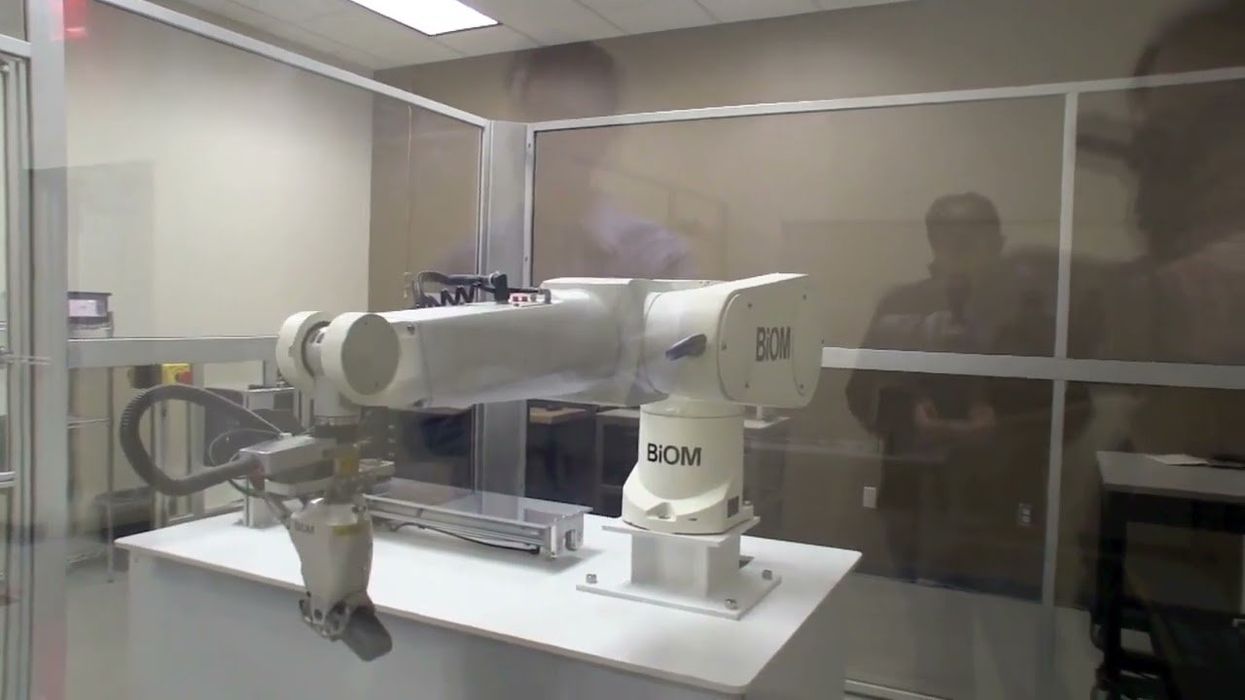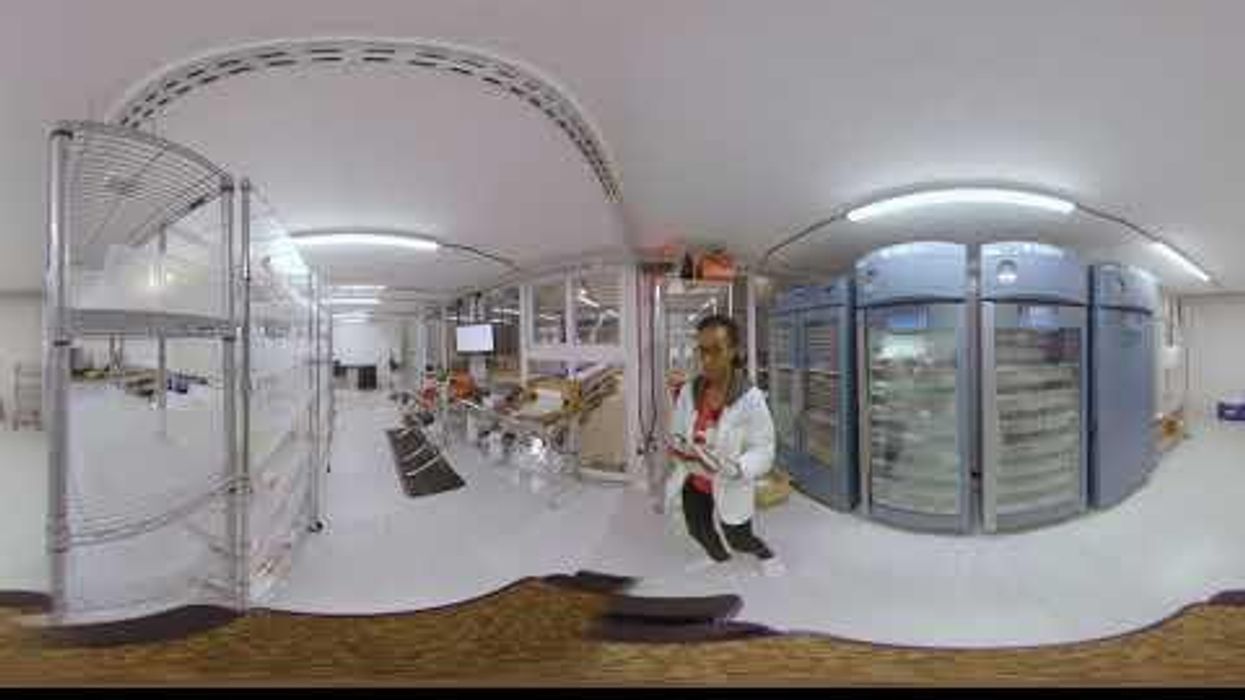Until recently, an artificial leg was an inert object—a clunky piece of wood or plastic that supported a user, but didn’t help much beyond that. But these days artificial limbs can contain advanced sensors and microprocessors, and their motors can provide a power boost for each step.
The BiOM, one of the world’s most advanced ankles, comes from the cutting-edge prosthetics company iWalk. The company was founded by MIT professor Hugh Herr, who directs the biomechatronics group at the MIT Media Lab. Herr is himself a double amputee: As a young man, he lost both legs below the knees after being caught in a blizzard on New Hampshire’s Mount Washington. That accident—and the rudimentary prosthetic legs he was fitted with—convinced him to study biomechanics, and to work on building more advanced prosthetics that mimic the design of the human body.
iWalk has received funding from the U.S. Department of Veterans Affairs and the Department of Defense, and some veterans wounded in Iraq and Afghanistan have already received their bionic ankles. The company has also begun to distribute the BiOM as a commercial product through dozens of advanced prosthetic centers around the country.
IEEE Spectrum visited iWalk’s headquarters in Bedford, Mass., to see its BiOM ankle in action and to learn more about how it works.
Rick Knapton: In a sense, you’re not an amputee anymore. You don’t look down, and walking is pretty much—you don’t think about walking, you just do it. My name is Rick Knapton and I’m an amputee. In 2002 I was walking down the street and helped a couple of kids get a ball off of a roof, and I fell about 3 feet and shattered my ankle, and went roughly eight years before I just finally said I didn’t want to keep it anymore. I had my leg removed. Three months later my prosthetist was contacted by Jennifer McCarthy, one of the prosthetists here, and invited me over to walk the ankle. This is my conventional foot. It’s a very good foot. It’s College Park. It’s conventional in the sense that it has no power. Whatever I give to it, it gives half of that back.
Eliza Strickland: iWalk’s prosthetic ankle, the BiOM, takes it to the next level. It’s a robot ankle.
Michael Smerka: It is a bionic device. So we are actually mimicking the physiology of the human body.
Eliza Strickland: Just like a muscle, the BiOM provides power that helps the user push off the ground with every step.
Rick Knapton: It helps you in the sense that it allows you to maintain a normalized gait. Whereas if I didn’t have this power assist, I may not be able to do that.
Eliza Strickland: The BiOM can tell whether the user is walking, running, climbing a ramp, or walking down stairs. Its sensors measure where it is in space, and its microprocessors determine how much it should flex and how hard it should push off from the ground.
Michael Smerka: So there’s a gyroscope in there. There’s an accelerometer. It’s basically a six-DOF system, or six degrees of freedom, that’s located in the IMU, and that’s the inertial measurement unit. So it’s measuring going forward, going backwards, side to side, up and down. So it knows where it is in all planes of space. And based on that input, it then communicates the encoder via state and motor controller to do what it does.
Eliza Strickland: The BiOM responds reflexively to the user’s pace, supplying more or less power as needed.
Michael Smerka: So we use this Bluetooth-enabled tablet to communicate wirelessly to the ankle, and we have various parameters that we’re tuning. So one of them is considered stiffness, and this controls how quickly the foot descends down to the ground.
Eliza Strickland: The best part: Once a user’s robot ankle has been adjusted to match his natural gait, he can forget all about it.
Rick Knapton: I mean as I’m walking right now, other than the little bit of sound that I hear, I wouldn’t be really paying attention to my foot. I’d just be moving along!
Eliza Strickland: For IEEE Spectrum, I’m Eliza Strickland.
NOTE: Transcripts are created for the convenience of our readers and listeners and may not perfectly match their associated interviews and narratives. The authoritative record of IEEE Spectrum’s video programming is the video.



